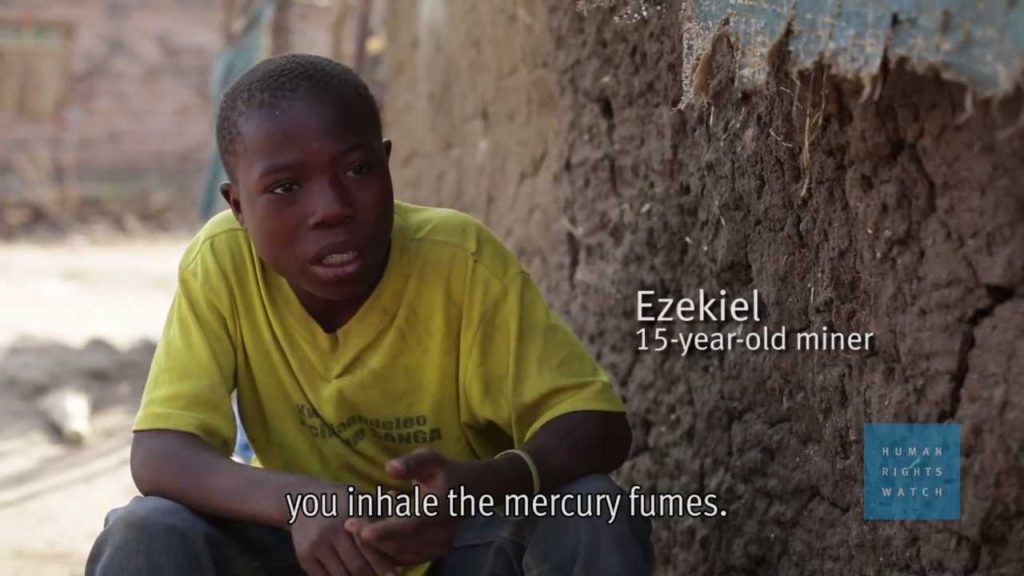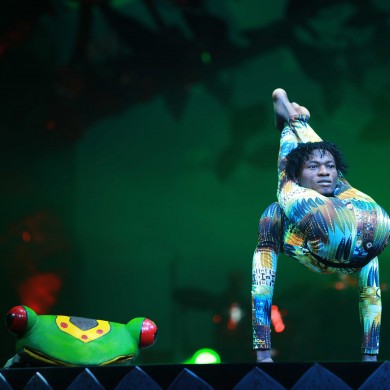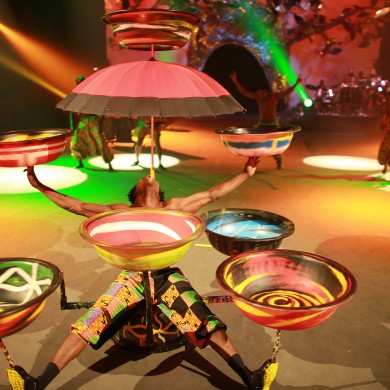Human Rights Watch has highlighted the plight of thousands of child labourers as young as eight who are mining gold in grim conditions in Tanzania.
Read the full story here.

Human Rights Watch has highlighted the plight of thousands of child labourers as young as eight who are mining gold in grim conditions in Tanzania.
Read the full story here.

It may be that nothing brings out a man’s emotional side quite like helping a woman buy a car.
A few months ago I lost Maggie, my trusty chariot of several years. She was a big-hearted Suzuki Jimny that could never go above 60kph, but had enough 4-wheel drive muscle to pull cars three times her weight out of bogs. I named her Maggie, like Thatcher, a solid name for a tough can-do broad. Even the rainy-season potholes of Dar were no deterrent to her. While thousands driving lesser cars got stranded in the suburbs at the slightest tropical downpour, Maggie would confidently navigate the dangerous rapids at Shopper’s Plaza bridge, not to mention the deceptively deep Lake Millenium towers – both on important tarmac roads connecting to the city.
But she’s gone now. While I know that nothing will ever feel as perfect as her gearshift cupped in my hand or the way her engine growled on cool mornings like a smoker waking up, I can’t help trying to look for a car that has some of her spirit. Good news came recently – one of my taximen had found another fiesty little Suzuki that I might be interested in.
Let me explain a little bit about the real taximen of Dar es Salaam. They are amazing. In the course of a couple of years, you can build relationships of trust usually only enjoyed between a client and her lawyer or a patient and her doctor. They’re the guys who will pick your kids up from school, buy your utilities when you run out, deposit cash at the bank and never charge your Mama when she sends them on an emergency trip because they know to bring the bill to you.
Nothing is beyond them, not a 3am am pick-up at Julius Nyerere International nor a hunt for an affordable apartment in the mixed neighborhoods off the Old and New Bagamoyo roads. I put out the word about a month ago that I was in the market for a new ride. My taximen understood what kind of car might pass muster as a replacement so when Tony called me about a potential candidate, I knew I was in safe hands.
Little did I realise how much my knights in shining motor vehicles would invest in the quest! Or how dramatic they can be. As I took the potential purchase for a test drive it was impossible not to smile at the guys – two taximen and a mechanic – who came along. They preened over my familiarity with a manual transmission. You’d think I had performed cardiac surgery.

Yet within hours of kicking the tyres of this potential purchase I had to counsel Tony, who was having a meltdown about hidden costs. The next day I had to calm down Mwinyi who could barely speak through his tears because he couldn’t get hold of me for two hours in morning to warn me about the hazards of a V6 engine. I was in a meeting for goodness sake! If these men weren’t so damn cute with their concern, this would be a very vexing situation.
What does a feminist like me do with such chivalry, when I have always considered it the other side of the chauvinism coin? I don’t know what kind of women they hang out with – all the best drivers I know are hardcore stick-shift women who drive like girls and thus keep their beloved cars roadworthy and unscratched for decades. I usually take my cue from these capable dames, but in this situation it just seemed churlish not to let my taximen lead the way. Hysteria included.
Because no matter how hard I tried to detect any condescension or outright patronising I just couldn’t. Mwinyi taught me everything I know about preventing salt-air corrosion in the car body, the regular replacement of spark plugs, fan belts and oil seals. They are inordinately proud of my independent lifestyle – especially the part where I can drive a stick shift. Haji and Saidi debate politics with me and have helped me out of more than one tight spot in life. If getting a little unhinged in their zeal to help me secure a new car is part of the deal, what’s a bit of craziness between friends?
It is not just the taximen in Dar who are crunchy on the outside and squishy on the inside, which is secretly one of my favourite Swahili Coast quirks. I’m not crazy, I do like a man who is in touch with his inner mother hen. But when you actually have to deal with that from your male support group? Eish. It can be overwhelming. I don’t know if the sale will go through, the owner is a tough but fair businesswoman and we’re facing off over the last couple of hundred thousand shillings. Wish me luck. No seriously, wish me luck. The mental health of my friends is hanging in the balance, bless their sweet and sensitive souls.
Elsie Eyakuze is a freelance consultant in print and online media from Tanzania, working mainly in the development sector. She blogs at mikochenireport.blogspot.com. Connect with her on Twitter.

I have always wanted to claim some kind of artistic savvy, the more so now that I write for public consumption. Alas, that is not the case. I live on a steady diet of DVDs and genre fiction, driven entirely by an insatiable appetite for entertainment that feels good. There is perfectly enjoyable high-brow stuff out there, but somewhere between having Salman Rushdie and Catcher in the Rye thrust upon me I learned discernment. I mostly read historical romance novels now, with a very light sprinkling of titles that are more admissible in public.
Up until three or so years ago, I cheerfully consumed Hollywood products. Something has happened to Hollywood, though, hasn’t it? These days only Robert Downey Jr., Star Trek and 007 will get me anywhere near a Cineplex. There is always a silver lining and in my case it has been the expansion of horizons. Now that I don’t care what Tinseltown does to itself, I am present enough to notice some of what is happening closer to home. Turns out that there are diamonds in my backyard after all.
I grew up in Brazzaville, Bujumbura, Mbabane and Dar es Salaam in the eighties and nineties on state broadcasters and the very occasional video that was deemed age-appropriate by the adult mafia. My parents especially made substantial contributions to the Disney empire. There wasn’t any opportunity to even imagine that the culture I consumed might reflect me in any way. The African female audience member? Laughable notion. The closest I ever came to relating to any character was the youngest Huxtable kid, and that was a stretch.
The thing is, no matter how open a person is to the range of human creativity, deep inside she craves the familiar. Everyone wants to see themselves on the page, on the screen. We want our stories told.
About ten years ago, a particularly involved conversation with an African American about depictions of black people in popular culture prompted me to dedicate my senior thesis to exploring depictions of Africans by Hollywood between 1930 and 2001. The only good thing I can say about this exercise is that I met a man from New York with an excellent collection of African cinema. The rest was tears and horror.
Things have changed – there was nowhere else for Hollywood to go but upwards. Nonetheless, the experience left me with a rather unfortunate prejudice: the idea that only Africans can make competent movies about Africans.
Well, I was wrong. There is no explanation for Nollywood products and their unfortunate imitations throughout Anglophone Africa. I tried to find something palatable in those eye-rolling, garish, tasteless and superstitious cretins that pass for “characters” and failed miserably. The depths of loathing that I reserve for Nollywood can only be matched by how I feel about stepping barefoot into a pile of thorn-laden, fermenting excrement.
Development cinema saved the day for me, since it is always too long between good pieces of African cinema. Listen, I am horribly surprised about this, and embarrassed. We’re all Africans here, we know the deal. The NGOs and the Breton Woods and the savior-complex poverty tourists equipped with cameras and an internet connection have been framing us, selling us and commercially spreading the gospel of their cause for years. Sweet ancestors: are these people for real?
But then one day there I found myself alone with YouTube and a link to some locally produced, externally funded efforts. Twenty four hours later I was sold on the television series Siri ya Mtungi. It had so much that my soul needed to see: gorgeous Tanzanian women who look like the plumptious, dark-skinned, beautiful, complex and intelligent people I know. Men as venal and stupid and morally bankrupt, as delightful and gentle and wise and generous, as I have ever encountered. Conflicts that I can understand. All to the tune of an excellently curated local soundtrack.
There is also lots of sex. We’re all Africans here so let’s tell it like it is. Our sex is always depicted as exotic, deviant, or fraught with danger and disease. Like I said: tears and horror.
Siri ya Mtungi is not exactly innocent. It aims to change the sexual behaviors of Tanzanians in order to curb the spread of HIV/Aids infections. Refreshingly though, there is no fire or brimstone here. Just good old fashioned storytelling spiked with provocation. They’re trying to throw condoms at the viewer, in the hopes that she might catch one like an unplanned pregnancy.
I literally watched my favorite uncle die of the slim disease in the nineties, slowly and painfully. Don’t need any additional behavior-change messaging, thank you kindly. Condoms come as naturally to me as eating my vegetables. Consequently I am not watching the series to learn anything new – I have a natural immunity to messaging – but I am very interested in the depictions of our sexuality.
Sex is a great lens through which to examine life. When someone gets your sex right, they get you right, donor-funded or otherwise. I hooked onto this series simply because it showed me … well, us. The smiles were familiar. The cadences were familiar. The settings are enchanting, the women feisty, the men handsome kinds of bad news. Finally. I can tell Hollywood and Nollywood to kiss my bountiful African posterior, for I have found some satisfying measure of truth on the screen.
Elsie Eyakuze is a freelance consultant in print and online media from Tanzania, working mainly in the development sector. She blogs at mikochenireport.blogspot.com. Connect with her on Twitter.

As we walked down a street in Grahamstown recently after a long day of learning about the fundamentals of social accountability, I observed my companion tracking the women around us on campus with his eyes. They were flaunting carefully selected fashion-conscious outfits. Bountiful pear shapes were hugged by skinny jeans and stretchy colour-block dresses that swished to the rhythm of their gait. There really are few things more delightful than the sight of a woman flouncing about in an outfit that makes her glow with confidence.
“No wonder the rate of rape is so high in this country,” he said. Just like that, my bubble of enjoyment burst. My own invisible blanket of security shriveled in the cool, sunny air. Danger lurked everywhere and male menace strode right next to me, ruining a pleasant stroll. What had just happened?
A lot of ink has been spilled over the politics of hair for women of African descent. There are basic conventions to follow. Every morning as I wrestle my fierce afro into submission with the help of coconut oil and a Black Power metal-toothed comb, there is no confusion in my mind as to what it will communicate to the world at large. But when it comes to selecting an outfit, I find the social calculations harder to make. The fact that nudity is not an option is vexing enough. Figuring out where the lines of propriety lie in new situations can give me conniptions.
Every day I face the gauntlet of choices about depilating and deodorising and re-odourising and taming my natural curves. Absolutely no detection of my menstrual cycle is allowed in public, hence a battery of products to manage the regular shedding of my uterus lining. Restrictive garments for the bits that move when left loose, and outer garments to conceal whichever parts of me are out of public favor. Shoes heightened to tilt my hips back and thrust my bra-shaped tits forward – often paired with items that, confusingly enough, help me maintain the requisite amount of sexual aloofness. We haven’t even talked accessories yet.
And woe betide me if I get the balance wrong. If my skirt is too short for the social gathering it will say the wrong things about my sexual mores, and if it is too long it will still say the wrong things about my sexual mores. How long a hem does a girl need to attract the attentions of the right kind of guy? Is it three-inch heels for “I’m ready to settle down in a spiritual union if you are” and nine-inch heels for “bring the whiskey, I’ve got the handcuffs and we can take turns playing the naughty police officer”? Or is it other way around? I forget.
But most importantly: what’s the rape signal, exactly? Because I would hate to send a “please attack me, traumatise me, and destroy a part of my soul” signal by mistake when I only meant to say “it’s a little hot today”. Maybe I should have asked my companion on our walk. The weight of male irresponsibility that women’s garments are made to bear is heinous, and it is depressing how the threat of sexual violence is used to enforce the rather restrictive concept of female respectability.

Since I choose to believe that the roots of this “respectability” business are firmly planted in patriarchal fears of the sacred feminine, among other things, I put some effort into avoiding its strictures. My home, Dar-es-Salaam, is cosmopolitan, the beneficiary of centuries of cultural intercourse, and it shows in the range of ways residents choose to dress. There is plenty of secular space to work in, even if we have to make allowances for our Muslim sensibility and our Bantu Christian conservatism.
The default rule in the performance of respectability is that the more you cover, the higher you score. In a city where the humidity rarely drops below sticky and the heat ranges between miserable and suffocating, one must employ a little sense when selecting a daily outfit. It can be hard not to resent the shirtless men cooling off their skin whenever they please, but since most of them work in physically demanding jobs there are visual compensations.
Years of navigating and negotiating Dar’s particular combination of expectations has taught me that it comes down to the nuances of a given environment or, more specifically, the weight that is accorded to the male gaze, even in women-only spaces. Not enough ink has been spilled over the politics of dress for women of African descent, at least none that avoids the profit-seeking of the fashion industry on one hand and the sexists on the other. Figuring out where the lines of propriety lie in new situations might be challenging, but I can’t help but be fascinated by the political aspect of it.
There are benefits to mastery, the primary one being physical safety. I like to think that I have become a seasoned politician in this arena. Although a nudity-embracing society remains the unattainable ideal, I do enjoy a wardrobe that includes neck-to-feet gowns, plunging necklines and a little red string bikini that I am rather fond of – all without incident so far. For the most part all is well with the world except for those times when I stray outside the familiar, and a handy chauvinist reminds me that the lines of propriety have shifted, giving me the horrors in pretty little Grahamstown.
Elsie Eyakuze is a freelance consultant in print and online media from Tanzania, working mainly in the development sector. She blogs at mikochenireport.blogspot.com. Connect with her on Twitter.

The Parisian audience is like a petulant child: very hard to please. So when French spectators and critics waxed eloquent over Cirkafrika, a show by an all-African circus troupe, I was intrigued, but pursed my lips à la française.
“Pfft!” I thought to myself, “What do they know? Yet another ho-hum repeat of contortionists and jugglers and human pyramids and dancers and unicyclists that are typical in plush resort hotels that line the Kenyan coast. Seen one, seen them all.”
A friend from Benin, also sceptical, went with his son to watch Cirkafrika and came away singing a new tune. “Mesmerising,” was his text message. That gave me food for thought.
So tickets were bought for an adult and three children for the show, which runs for over two hours. The children were to be the jury, with the main judge being my three-year-old whose attention span is pretty good – 30-40 minutes tops.
The French circus, Cirque Phénix, produced Cirkafrika. Cirque Phénix’s aim is to present novel artistic creations each new season. Having no proper circus tradition to speak of in Africa – we have only four big tops: one based in Egypt, two in South Africa and one in Tanzania – unlike the Chinese and Eastern Europe circus heavyweights, it is not surprising that Paris sat up and paid attention to Africa coming to town.
While looking for African talent comparable to circus chefs-d’oeuvre from Moscow and Peking, Alain M. Pacherie, the founder and director of Cirque Phénix, turned to the Zip Zap Circus (South Africa) and Circus Mama Africa (Tanzania). What was once a germ of an idea – an African show, unlike any other, in Paris – became a reality a few years later.
This was the reality we went to discover on a recent wintry Saturday afternoon in Paris.
The artists from South Africa, Ethiopia, Tanzania, Ghana, the Congo and Guinea; the costumes; the stage decor; the giant 3D animal and bird marionettes; the music – Lion King, move over! – were all made in Africa.
Forget clichéd African folklore and dancers garbed in traditional attire welcoming an African president or some other dignitary; forget the cold disciplined professionalism of Chinese acrobats and the aloof masterful excellence of trapeze artists from eastern Europe; forget the crisp, pasted smiles of chorus-line girls dancing the French cancan.
How could one not stand up, from the word go, and dance to Miriam Makeba, Youssou N’Dour or Touré Kunda numbers sang by three African musicians accompanied by a Big Live all-African band?
I felt Pata Pata.
The splash of colours from the costumes, decor and music reminded me of an African marketplace with its pyramid arrangement of colourful fruits and vegetables, and people talking, gossiping, haggling and laughing with music blaring from a nearby stall.
Cirkafrika is oh so cheerful, the music vibrant and the artists generous. The children couldn’t get bored even if they’d wanted to.
The artists – all very professional, focused and elegant in their performances – made their acts look so easy. They were genuinely having fun, their joy so contagious that I longed to join them on stage even though I have no circus skills.
Large, colourful plastic wash basins that can be found in African households replaced plates and bowls in the plate-spinning contortionist’s act. The artist spun five of them at a dizzying speed – one per limb and the fifth was spun using his mouth. The act was accompanied by vibrant dancing.

The colourful basins took me back to Saturday mornings in Kenya: tending to household chores after breakfast using similar kinds of basins, the same ones that hold grain and spices sold at the market. Cirkafrika was a ray of warm tropical sunshine in the middle of a European winter.
The Ethiopian hoop artist made me forget that she was manipulating hula hoops. What I saw was a Samburu woman beautifully adorned with handmade beaded ornaments.
Cirque Phénix never presents animal acts as a matter of principle, but what would Africa be without her rich fauna and award-worthy costumed artists on stilts? The children saw an animal parade of graceful giraffes, tropical birds, crocodiles and a life-size elephant. And the frog! Oh the lithe green human frog, padded feet, croaking and all. How on earth did he manage to fit into that little transparent box?

South Africa’s gumboot dancers made us long for more. So we asked for one encore and a second encore and yet another encore. We danced and we celebrated Africa. We saw the other face of the continent that has potential and talent and that can adapt and excel while preserving its Africanness.
Cirkafrika whispered that we can dare to dream and to believe in Africa because Africa’s got talent!
My children’s verdict? If Cirkafrika comes to a big top near you, drop whatever you are doing and run, don’t walk, to see it.
I agree.
The show, now on the road in Switzerland, Belgium and Ukraine, will be back in France/Europe in Winter 2013.
Jean Thévenet, a work-at-home mum, was born and raised in Kenya. She now lives in France and blogs at http://hearthmother.blogspot.com.